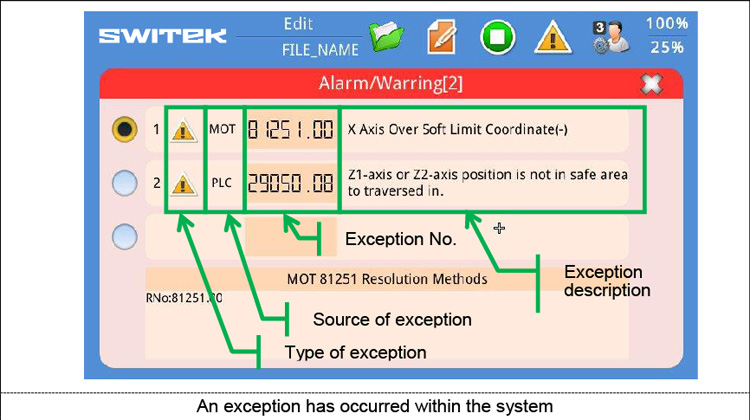Troubleshooting
There are two types of exception messages in system, one is sthe alarm message, the other is the error message. A dialog box will appear when the system issues an exception message. The user must troubleshoot the system for it to normal operation.
13.1. Alarms and errors
An exception has occurred

When an exception occurs, an alarm/error message dialog box will apear with the following information:
[Type of exception]
Alarm: A red triangle will be shown.
Warning:A yellow triangle will be shown.
[Source of exception]
PLC, HMI, MAIN, COM, SERVO, OP, MOT, MACRO.
[Exception No.]
The same exception number can be assigned to exceptions caused by diferent reasons, so the source of exception must be addressed during the description of the exception number.
[Description of the exception]
Describes the cause of the exception as well as possible troubleshooting methods.
Troubleshooting
After an alarm is issued, the system will prohibit the axial movement and point O output. The user must troubleshoot the cause of the alarm before pressing the [Stop key below to reset the system. If the cuase of the alarm was not resolved, the system will issue the alarm message again.
Wehn an error takes place, a message prompt will appear in the system to notify the user of the operation error. After the error is corrected by the user, the system will automatically clear the error messag.